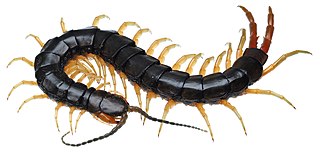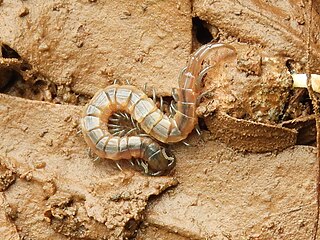
A lynx is any of the four extant species within the medium-sized wild cat genus Lynx. The name originated in Middle English via Latin from the Greek word lynx (λύγξ), derived from the Indo-European root leuk-, in reference to the luminescence of its reflective eyes.

The white-throated dipper, also known as the European dipper or just dipper, is an aquatic passerine bird found in Europe, Middle East, Central Asia and the Indian Subcontinent. The species is divided into several subspecies, based primarily on colour differences, particularly of the pectoral band.

The common wood pigeon, also known as simply wood pigeon, is a large species in the dove and pigeon family (Columbidae), native to the western Palearctic. It belongs to the genus Columba, which includes closely related species such as the rock dove. It has a flexible diet, predominantly feeding on vegetable matter, including cereal crops, leading to them being regarded as an agricultural pest. Wood pigeons are extensively hunted over large parts of their range, but this does not seem to have a great impact on their population.

Allium ursinum, known as wild garlic, ramsons, cowleekes, cows's leek, cowleek, buckrams, broad-leaved garlic, wood garlic, bear leek, Eurasian wild garlic or bear's garlic, is a bulbous perennial flowering plant in the amaryllis family Amaryllidaceae. It is native to Europe and Asia, where it grows in moist woodland. It is a wild relative of onion and garlic, all belonging to the same genus, Allium. There are two recognized subspecies: A. ursinum subsp. ursinum and A. ursinum subsp. ucrainicum.

Salicornia is a genus of succulent, halophytic flowering plants in the family Amaranthaceae that grow in salt marshes, on beaches, and among mangroves. Salicornia species are native to North America, Europe, central Asia, and southern Africa. Common names for the genus include glasswort, pickleweed, picklegrass, and marsh samphire; these common names are also used for some species not in Salicornia. To French speakers in Atlantic Canada, they are known colloquially as titines de souris. The main European species is often eaten, called marsh samphire in Britain, and the main North American species is occasionally sold in grocery stores or appears on restaurant menus as sea beans, samphire greens or sea asparagus.

Hippophae is the genus of sea buckthorns, deciduous shrubs in the family Elaeagnaceae. The name sea buckthorn may be hyphenated to avoid confusion with the unrelated true buckthorns. It is also referred to as sandthorn, sallowthorn, or seaberry. It produces orange-yellow berries, which have been used over centuries as food, traditional medicine, and skin treatment in Mongolia, Ladakh, Russia, Ukraine, and northern Europe, which are its origin regions.

Amanita fulva, commonly called the tawny grisette or the orange-brown ringless amanita, is a basidiomycete mushroom of the genus Amanita. It is found frequently in deciduous and coniferous forests of Europe, and possibly North America.

The European pond turtle, also called commonly the European pond terrapin and the European pond tortoise, is a species of long-living freshwater turtle in the family Emydidae. The species is endemic to the Western Palearctic.

Orchis militaris, the military orchid, is a species of orchid native to Europe. It is the type species of the genus Orchis.

Salix cinerea is a species of willow native to Europe and western Asia.
Nannarup is a genus of soil centipedes in the family Mecistocephalidae; this genus includes a single species, Nannarrup hoffmani, commonly known as Hoffman's dwarf centipede, which was discovered in New York City's Central Park in 2002. This species has 82 legs and is only 10 mm long, the smallest size in the order Mecistocephalidae. This species features few coxal pores, which do not reach the dorsal side of the coxopleura.

Amanita crocea, the saffron ringless amanita, is a species of Amanita widely distributed in Europe. It is not recommended for consumption due to its similarity to poisonous species of the genus.

Cryptops hortensis, the common cryptops, is a species of centipede in the family Cryptopidae, genus Cryptops.

The Cryptopidae are a family of scolopendromorph centipedes. Cryptopids are blind and possess 21 pairs of legs. The genus Cryptops is the numerically largest in the family, comprising over 150 species worldwide.

The Solanaceae, or the nightshades, are a family of flowering plants that ranges from annual and perennial herbs to vines, lianas, epiphytes, shrubs, and trees, and includes a number of agricultural crops, medicinal plants, spices, weeds, and ornamentals. Many members of the family contain potent alkaloids, and some are highly toxic, but many—including tomatoes, potatoes, eggplant, bell and chili peppers—are used as food. The family belongs to the order Solanales, in the asterid group and class Magnoliopsida (dicotyledons). The Solanaceae consists of about 98 genera and some 2,700 species, with a great diversity of habitats, morphology and ecology.

Scolopendra japonica, formerly classified as Scolopendra subspinipes japonica, is a species of scolopendrid centipede mostly found in Japan, although specimens have been reported in other parts of Eastern Asia such as China, Taiwan, Myanmar, Cambodia, and Laos. They usually grow between 7.5 and 13 centimetres in length. It is known by the common names Japanese giant centipede and blue-head centipede.

Asanada is a genus of centipedes in the subfamily Scolopendrinae. It has thirteen known species, which usually grow between 25–35 mm (0.98–1.38 in) in length. It can be distinguished from the genus Cormocephalus by having smooth anal pleurae, but is otherwise quite similar in appearance. The type species of the genus is A. brevicornis, the type specimen of which was collected in Kulu, India.

Arthrorhabdus, from the Greek ἄρθρον, a joint, and ῥάβδος, a staff, is a genus of Scolopendrid centipede in the subfamily Scolopendrinae. Species are found in Mexico and the Southern United States, Australia (A. paucispinus & A. mjöbergi), and South Africa (A. formosus). Since a reapprasial in the genus in 2010, the genus only has four species. It may be polyphyletic.

Cryptops parisi is a species of centipede in the family Cryptopidae.

Cryptops sometimes known as cave centipedes, is a centipede genus in the family Cryptopidae; species records have a world-wide distribution.

















